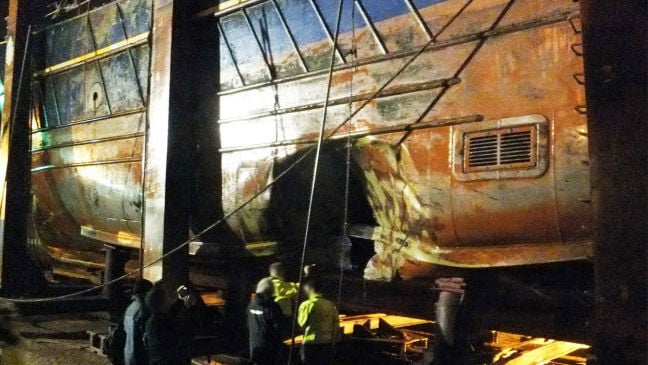Accident Reports: Seafarers Ignore Safety Management Systems

The Marine Accident Investigation Branch (MAIB) has released its latest Safety Digest highlighting the human element as a consistent contributory factor in accidents.
The procedures and safe working systems that lie at the core of all safety management systems are there for a reason, says Steve Clinch, Chief Inspector of Marine Accidents at MAIB. “Investigations into marine accidents consistently identify cases where mariners chose to ignore the instructions and guidance contained in companies’ safety management systems. The root cause for this is often complex, but MAIB investigators regularly identify a disconnect between the safety culture that shore-based managers believe (or perhaps hope) is in place within their fleet and what is really happening on board.”
Cases 1, 11 and 16 are good examples of this, he says. “A strong safety culture is not something that will appear by magic, it takes hard work and commitment – particularly from senior managers ashore and afloat.
“Safety management systems need to evolve over time if they are to remain credible. If the procedures on board your vessel are not working, don’t just use convenient work arounds to get tasks done – flag up the problem and make sure they are changed or amended in a controlled way that ensures the system retains its credibility and continues to reflect the company’s best practice requirements.”
In the digest, Captain John Rose, Director of the Confidential Hazardous Incident Reporting Program (CHIRP) highlights the importance of crew’s ability to deal effectively and safely with the complexity, difficulty, pressures and workload of their daily tasks, not only in emergency situations, but also during routine operations.
“Crewmembers and the ship’s superintendents should ask themselves, “What is normal on board our ships?” In one case it was to sail on a routine basis with inadequate stability! In others there appeared to be no risk assessments undertaken and an absence of a management of change process,” said Rose highlighting accidents cited in the report.
“Seafarers now undertake mandatory training in resource management, leadership and team working skills at an operational level, then leadership and managerial skills at management levels. So why do we still read about masters demonstrating rule breaking behaviours and equally, not being challenged by the officers?
“The master of a passenger ship that went aground had not amended the passage plan when a new destination for anchoring was required – subsequently without a plan to work with, the bridge team was unable to adequately assist the master. After the grounding, the master did not use the emergency checklist available to him and took the ship full of passengers to sea.”
A great deal of time and experience goes into preparing emergency checklists, says Rose. Their use provides a ready-made strategy to ensure that mistakes and omissions in the heat of the moment do not make a bad situation worse.
Navigation and collision avoidance aside, the officer of the watch (OOW) also needs to be available to respond to emergencies such as fire, machinery breakdown and man overboard. In one case reported in the Safety Digest, the OOW was not on the bridge for 20 minutes. “The OOW is required to maintain a continuous watch on the bridge for good reasons,” says Rose.
The report is available here.
The opinions expressed herein are the author's and not necessarily those of The Maritime Executive.
